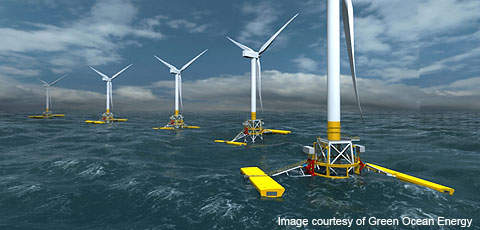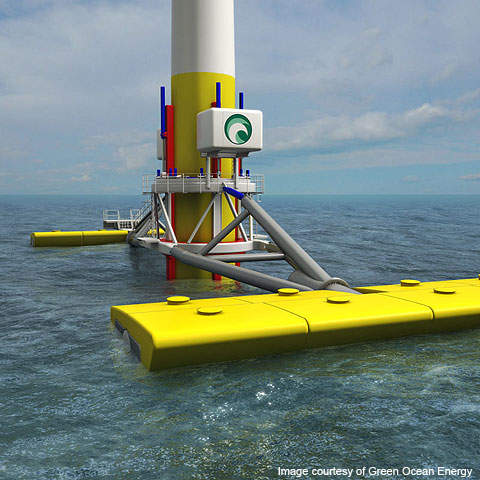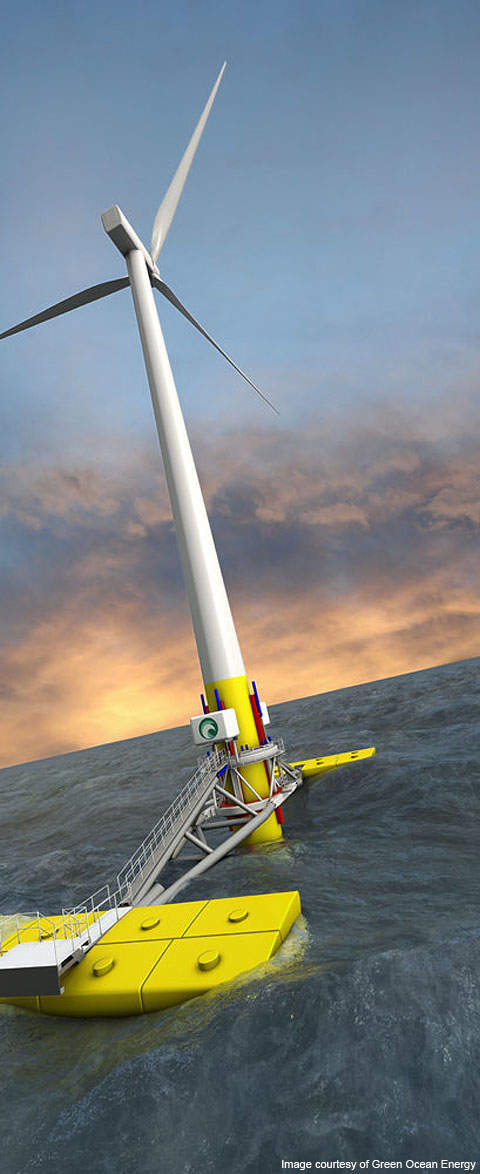Scotland-based Green Ocean Energy is in the process of becoming the first marine energy company to have its technology fully certified. In May 2010 the company embarked on the process of obtaining its statement of feasibility for the Wave Treader machine from Det Norse Veritas (DNV), an independent foundation of experts that identify and manage risks for energy and marine industries. The design certification is the first stage of the four-part certification process.
The Wave Treader machine was also separately reviewed by SgurrEnergy, an energy consultancy firm that has confirmed its commercial potential. After the success of the first stage, Green Ocean Energy is now planning certification of the design and construction stages of the Wave Treader prototype.
Construction of the full-scale Wave Treader prototype is scheduled to be completed in the third quarter of 2011 and it will be trialled at a test centre in the UK.
Wave Treader is primarily aimed at the UK round three offshore wind farms and Scottish territorial waters. Around 7,500-8,300 offshore wind turbines are expected to be installed in the UK between 2015 and 2023.
Wave energy device
The Wave Treader is a unique wave energy device that shares the offshore wind farm infrastructure and helps increase yield from the same sea area. It is attached to the transition piece of an offshore wind turbine, and provides an easy access to the turbine for the technicians to carry out repairs when needed, in addition to power smoothing in the offshore wind farm.
Wave Trader is 50m long and has a 20m beam. It comprises steel load-bearing members, with the floating bodies moulded of glass-reinforced plastic (GRP). The hydraulic and electrical equipment are standard to industry specifications and are “off-the-shelf” items.
The modular design of the machine will make it easier to change components, and the design will be kept simple to increase reliability and reduce manufacturing costs. It has a US patent approval, with patents pending in other areas.
The machine is designed to minimise single point failure modes by duplicating the equipment; if one item fails the other can be put to use without any interruption in power production.
Wave Treader is currently projected to have 500kW-700kW of peak rating, due to high yield per unit area of sea. Its operational life is 25 years, with refits every five years.
Wave Treader technology
Wave Treader has a fore arm, aft arm and sponson, which together function through an interface structure at the foundation of an offshore wind turbine. Hydraulic cylinders are installed between the arms and the interface structure.
As the wave passes, first the fore arm and sponson lift up and fall down, then the aft arm and sponson each pass over the hydraulic cylinders. This pressurises the hydraulic fluid which is then smoothed by hydraulic accumulators. The hydraulic motor turns on a generator to produce electricity, which is transmitted through the cables connected to the wind turbines.
The interface structure moves vertically in the tidal range and also rotates to ensure optimal alignment of the sponsons in the direction of the waves.
Wave Treader also can be retro-fitted to already existing wind farms.
Scottish power market
Scotland generates about 48,000GWh of electricity, mostly through coal. The remainder is produced from gas and oil, nuclear power and renewable sources. There has been an 18% increase in renewable energy since 2006 , most of it coming from non-hydro renewable sources such as wind, wave, solar power and thermal. The increase in non-hydro sources has been significant, rising from 0.6% in 2000 to 7.4% in 2007.
Scotland aims to generate 50% of its electricity from renewable sources by 2020, which equates to an increase of 500% in wind farms. According to research consultancy Wood Mackenzie, electricity demand will increase by 10% in the same time period and about 80% of the renewable electricity will be provided by onshore wind farms. Marine, biomass and hydro energy will grow at a tenth of the rate of the new wind energy.






